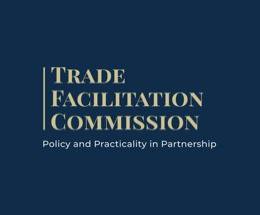Why is it that many of the world’s most advanced companies struggle to create diversified workforces, despite spending hundreds of millions of dollars on diversity training and recruitment?
Implicit bias may be partly to blame, or the idea that even people with the best of intentions toward diversity can harbor attitudes and beliefs that affect their thoughts, feelings and actions outside of their awareness.
These biases stem from our preference for people who are similar to us, provide a feeling of safety, or feel familiar. Indeed, research has shown that men and women alike start to treat minorities differently within milliseconds of seeing them. Our brains automatically carve the world into in-group and out-group members and apply stereotypes within the blink of an eye.
This creates a conundrum for organizations: They want to improve diversity through hiring and promotions, yet doing so requires people to overcome a mental process over which they have little control and that training can’t fix.
What is the solution? The key is taking the bias out of the hiring process, instead of trying to take bias out of the person. Here are some tactics on how to do that:
1. Check the job description. Look for signs of implicit bias in the way a job ad or posting is written. The wording can subtly encourage or discourage different kinds of applicants. For instance, fewer women may apply for a job that calls for a “dominant” or “competitive” personality because these are traits that people positively associate with men in the workplace, but negatively associate with women. Avoid language that references one gender over another (use spokesperson instead of spokesman) and words like “up and coming” or “fresh,” which implies a preference for younger candidates.
Companies that use pro-diversity language—statements like “we want people from different regions”—find that it leads to less résumé “whitening,” which is when candidates alter their résumés to remove cues of their racial identity. Careful attention to ad language can help create a more diverse pool of applicants from the outset.
2. Recruit outside your comfort zone. Implicit bias can encourage employers to stay in their “comfort zone” when it comes to where they recruit. For example, many Silicon Valley technology firms recruit primarily from Stanford University. It isn’t because, say, Carnegie Mellon or Massachusetts Institute of Technology has inferior computer-science programs; rather, it’s because Stanford is familiar and closer—two key factors underlying implicit bias. Having employees with the same cultural background not only encourages negative processes such as cultures of secrecy and group think, it also conveys to qualified outsiders that they shouldn’t even bother applying. To counteract this, companies should create a list of the job qualifications that matter most, and then identify schools and other places where potential applicants have these qualities. If earning a degree from a rigorous computer-science program matters, then organizations should rank the top programs and actively recruit from all of them.
3. Evaluate every résumé the same way. Implicit bias can lead us to view the same qualifications differently for minority and majority candidates. One study found that white candidates receive 50% more callbacks for interviews than black candidates with the exact same résumé—all that differed was the name of the candidate. To avoid this, develop a standard evaluation form with a detailed scoring metric early on and use it the same way for every résumé. Another strategy might be to eliminate information about race or gender from résumés so it doesn’t play a role in the decision-making process. For instance, some companies remove names and photos from résumés before reviewing them.
4. Identify what you want before interviews begin. Implicit bias can lead us to rationalize why we preferred one candidate over another, so it’s important to identify behaviors that are relevant to the open position before interviews begin. For example, you might not realize that you favored education over experience because you felt a connection to the white candidate with an Ivy League degree rather than the Asian woman with 10 more years of experience. This is especially likely to happen when there are two candidates with different but equal qualifications. Clearly communicating the standards to candidates also creates a fair and transparent hiring practice and makes the employer more attractive.
Subscribe to the Journal Report podcast at wsj.com, on iTunes or Google Play Music.
5. Stick to a script during interviews. Interviewers naturally create a warmer or more casual climate for candidates they perceive as “in-group” members—say, those who went to the same university or were in the same fraternity. This natural instinct to reach for common ground can advantage certain groups by making them feel at home. It also can unintentionally lead minority candidates or people who feel like outsiders to experience more stress. For example, women experience greater stress when being evaluated by panels of men (compared with a gender-balanced panel), while for men, the gender composition of the panel doesn’t affect their stress. Sticking to a script during interviews and paying attention to the setting can level the playing field for job candidates. Asking everyone the same questions or having them complete the same task also makes it easier for the better candidate to stand out.
6. Ensure decisions are based on the right metrics. In 2015, one big tech company began incentivizing recruiters to find more diverse engineering candidates by giving them extra credit for diversity hires. Among other things, the recruiters reached out to engineering schools in Africa, enticed college students from a wide variety of backgrounds to intern at the company and made sure that a “buddy” from a similar demographic group took part in interviews. But the efforts failed because the final hiring decisions were made by white or Asian men who rated candidates on traditional metrics such as the prestige of their alma mater, experience at a top tech firm or references from existing employees. Automatic preferences for familiar metrics of status and success are very common, which is why companies need to ensure that hiring decisions are based on the behaviors and credentials that are deemed relevant to the position before interviews are conducted.
7. Continually analyze the process. While it is nearly impossible to determine whether implicit bias affected any single hiring decision, disparities will emerge when decisions are reviewed in the aggregate. For instance, if half of the job applicants are women, but no women are invited to the job interview, it would suggest that bias might be entering at the selection stage. By constantly analyzing the data across every stage, companies can identify bottlenecks. Of course, disparities in outcomes don’t always imply the process is biased (such as industries where talent is overrepresented among certain subgroups).
Before companies spend millions more on ineffective diversity training, they should revisit their hiring procedures to ensure that bias isn’t built into the process.
Dr. Van Bavel and Dr. West are associate professors of psychology at New York University and senior scientists at the Neuroleadership Institute. They can be reached at reports@wsj.com.
Our editors found this article on this site using Google and regenerated it for our readers.













